© 2022 Winterhaven Hospice
All Rights Reserved
Text JoinTeam to 97211 to learn more about career opportunities today!

It’s time to speak up about breast cancer, and the month of October is dedicated to doing just that. As the most common form of cancer, it’s likely that someone in your life whom you care for deeply has been diagnosed with breast cancer. Given how prevalent breast cancer is and the repercussions it has on individuals and families affected, this month is a time to rally together and raise awareness about it.
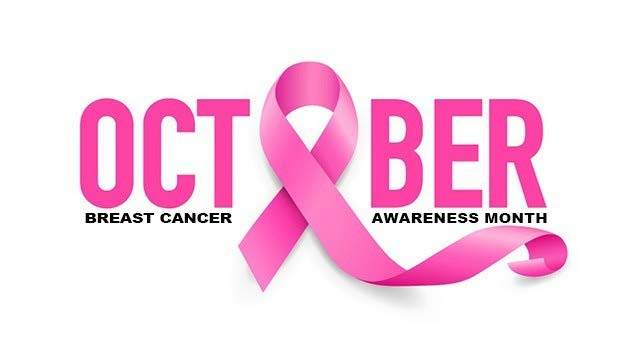
In the United States, more women die from breast cancer every year than any other form of cancer. It’s currently estimated that 1 in 8 women in their lifetime will be diagnosed with an invasive form of breast cancer. Two of the greatest risk factors of getting breast cancer are female gender and older age, though men and younger women can get it as well. The statistics are alarming, and a diagnosis can feel daunting and isolating, whether it’s yourself or a loved one or family member who is receiving it. Fortunately, breast cancer research continues to thrive, which has led to improvements in screening processes and treatment success. These improvements have been given some of the credit for the slightly decreased death rate from breast cancer over the past several years. In order to take further advantage of the strides we’ve made in battling breast cancer, we must continue to educate our communities about the screenings and treatments available.
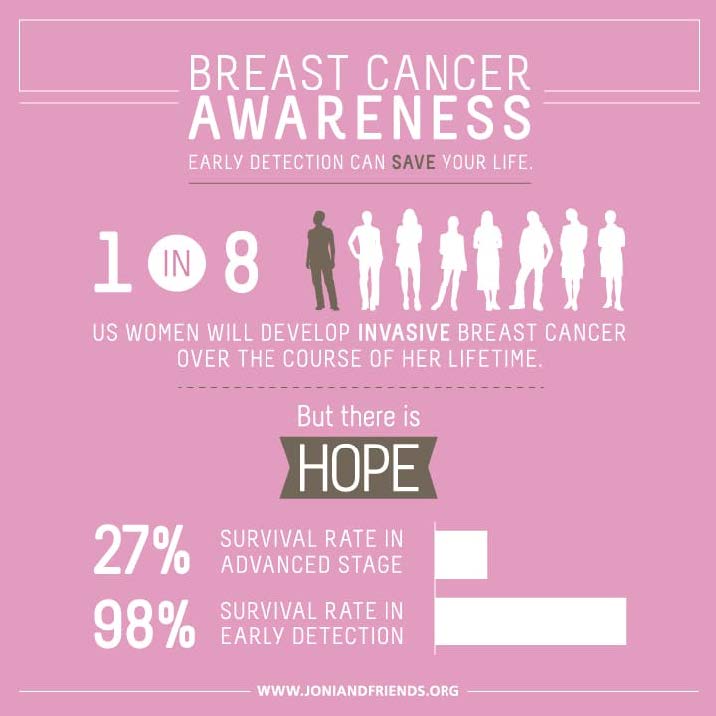
While there is no way to guarantee prevention of breast cancer, it is recommended that all adult women perform a breast self-exam monthly. This is a great way to self-monitor for any changes or abnormalities that may occur in the breast tissue. As you age, this becomes an even more important habit as age is one of the main risk factors. It is important to note that not every growth or lump felt in the breast tissue is a cancerous mass. Some non-cancerous masses are abnormal but do not grow outside of the breast tissue. While these lumps do not innately pose a risk, some of these growths can increase a women’s risk of getting breast cancer down the road. Any abnormality or change in your breast tissue that you notice or feel should be examined by a health professional immediately. Just under half of women diagnosed with breast cancer were diagnosed after noticing a lump during a self-exam, so the importance of this routine cannot be overlooked. In addition to regular self-exams, maintaining a healthy weight through exercise and a nutritious diet is another important way to reduce your risk of breast and other cancers.
Should you receive a diagnosis of breast cancer, take the time to find a team of doctors whom you are comfortable with and trust with your care. This team can include an oncologist, or cancer doctor, a surgical oncologist, a radiologist, a case worker, a registered dietician who specializes in cancer nutrition and possibly several other specialty providers. These individuals will be with you, alongside your personal support system, to make sure you receive the best care available from diagnosis on. Treatments and interventions will differ depending on the type of breast cancer you are diagnosed with and your doctors will help you navigate all of the options and should use their expertise to recommend the best course of action. Make sure you feel comfortable asking questions and engaging in your treatment plan. Your providers have the knowledge and the skill sets to provide excellent care, but it is just as important that you feel included in the decisions being made and prepared for the treatment road ahead.
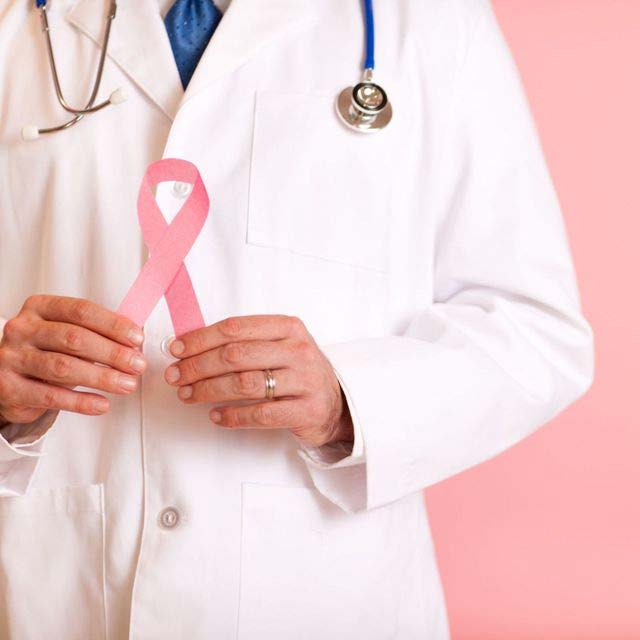
Whether you are young, old, male, female, part of a high-risk category or not, it is our shared efforts in spreading awareness this month of October and all months following that will successfully raise awareness, education, and resources about breast cancer to every individual diagnosed and every family and friend supporting them. As a society working together, it is within our reach to decrease breast cancer diagnoses within our communities and to improve the outcomes and survival rates of those diagnosed.
National Breast Cancer Foundation, INC.
As a survivor of breast cancer, few will understand the struggle you endured, but many acknowledge and honor the strength it took to carry on.

Alongside the relief and celebration that comes with completing treatment and hearing the long-awaited word “remission” may come a host of other emotions. Some of them may not be as positive. You may feel fear of the cancer coming back or anxiety about not seeing your treatment team as often. Surgeries and treatments can alter the way you feel about your body. These emotions are natural after what you’ve been through, and it’s important to know that you’re not alone and that you have resources at your disposal to live your life as fully as possible following recovery.
After completing treatment and entering into recovery, it is important to abide by your doctor’s recommended follow up care. This care often includes checkups every few months for the first several years after treatment. As your cancer-free time increases, the frequency of appointments can begin to decrease. If you had breast-conserving surgery to include a lumpectomy or a partial mastectomy, it is recommended that you get a mammogram 6-12 months after surgery and radiation and continue to get them annually for monitoring. Pelvic exams may also be included in your follow up care as some of the hormone drugs can increase your risk of endometrial or uterine cancer. Another test that may be done, especially if you have gone through menopause, is a bone density scan. Monitoring your bone health will be a priority for your doctor especially if your cancer treatment included drugs that can reduce bone density.

Battling cancer and enduring the challenges that come with treatment can leave you feeling exhausted. It can be challenging to find the energy to keep up with follow up care, knowing that it will be a crucial part of your life as a survivor. Express any concerns or anxiety or overwhelm you are feeling about your continued treatment and monitoring with your doctor. Collaborate with them and let them help you feel more in control when it comes to your checkups. Equally important as your medical team is your support system. Continue to lean on the individuals who supported you through treatment, whether it be family, friends, a loved one, a support group or a therapist. Support systems can often help to shoulder some of the burden when it comes to remembering appointments, driving to procedures, and encouraging you to continue doing the things you love outside of your healthcare.
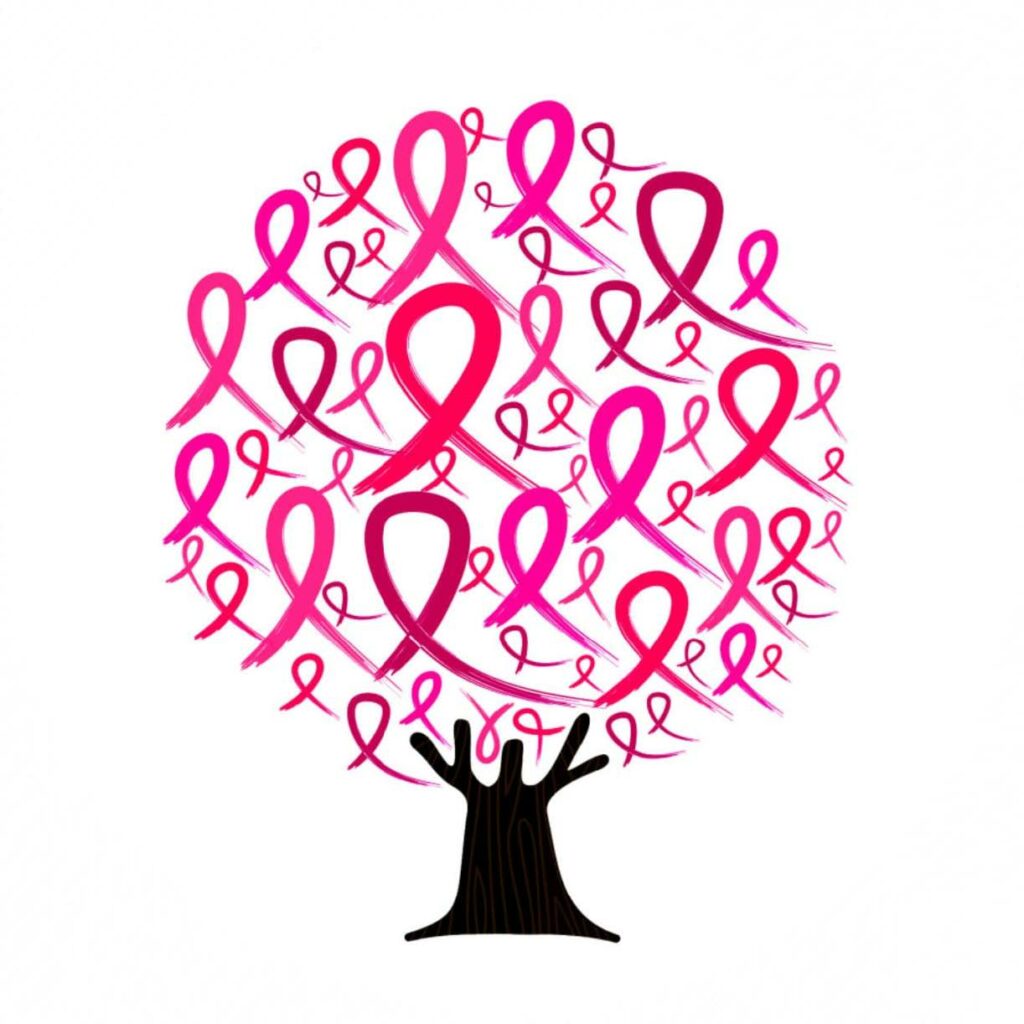
Every single individual’s experience with surviving breast cancer is unique and special. You will have your own thoughts, feelings, challenges and success that you overcame and that you will continue to experience as you embrace a heightened awareness of your health for the rest of your life. Beyond this, you are an example of hope and strength for others who are fighting their own battle against breast cancer. Continue to spread awareness this month and every other so that we can continue to win more of these battles.
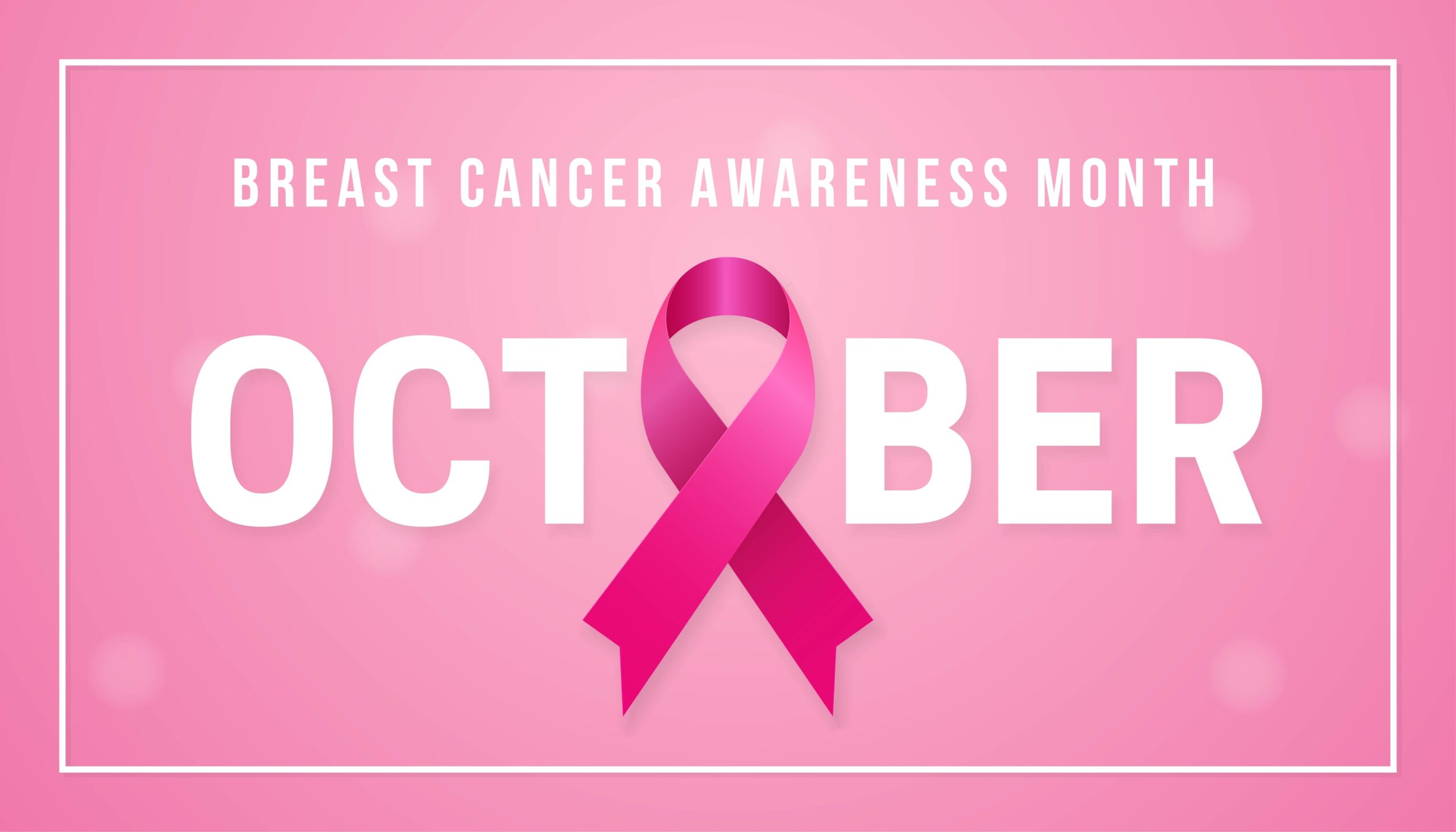
Breast cancer is one of the most common cancers among women in the United States, second only to skin cancer. It’s a disease in which the cells in the breast grow out of control. There are several types of breast cancer, but there are two that are most common. Invasive ductal carcinoma is when the cancer cells begin in the ducts and then grow outside them into other parts of the breast tissue. Invasive lobular carcinoma is when the cancer cells begin in the lobules and then spread from there to the breast tissues that are close by. It is possible for both of these invasive cancer cells to spread to other parts of the body.
Symptoms of breast cancer can vary from patient to patient, and some may not experience any at all. However, some common symptoms one may experience are:
If you have concerns about any symptoms you are experiencing, see your doctor right away.
There are several factors that can put a person at higher risk for developing breast cancer. Some are beyond our control, while others we can change. One of the main factors that puts a person at risk for breast cancer is being a woman. Although men can get breast cancer, women are at higher risk.
If you or someone you love has been diagnosed with breast cancer, and curative treatment is no longer an option, hospice may be right for you.